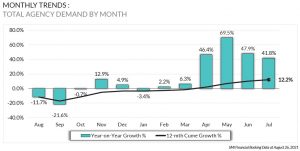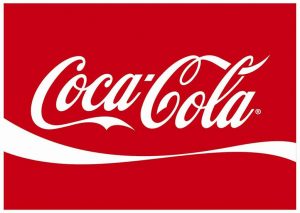
WHEN TOO MUCH SPORT IS BARELY ENOUGH!

Warning, blatantly obvious statement to follow: Australians love their sport! So much so that Australia arguably has the world’s strictest anti-siphoning laws ensuring you will be able to watch a large variety of sporting events on free to air TV Channels. The NRL, State Of Origin, AFL, Melbourne Cup, Australian Open, Cricket and Motorsport are just some of the sports covered under the anti-siphoning laws. These Sports are also extremely important to the Networks as News and Sport seem to be the last bastion of guaranteed high ratings for the networks.
Going back many years, Australians only ever had the 3 free to air stations, SBS and the ABC to view Sport on. Fox Sports came along in 1995 and it took close to another 20 years before BeIN sports offered a reasonable alternative in 2014. Optus Sport came to the market in Jul 2016, Kayo in Nov 2018, Stan Sport in Feb 2021 and Paramount+ Sport in Aug 2021. We now have more sport coming to us than we can possibly watch.
Interestingly, for those that watch sport on Television, the older age groups (50+) index very highly for the sports covered by the anti-siphoning laws. While Sports outside these laws such as Football and NBA (American Basketball) are very popular with the younger 14-24 age group.
While the Government is protecting the older sport loving population (& the Networks) from missing out on seeing major sports for free, the Telecommunication companies and Streaming platforms are fighting it out for all other sports which tend to appeal to younger sports lovers. The sports on the Telecommunication and streaming platforms naturally come with a price. This means younger fans have to pay to see the lower profile sports but who wouldn’t want to pay to see the American Ultimate Frisbee League (presently on Kayo).
The Telecommunications companies have huge revenues and can trump all other bids for sports. If it wasn’t for the Government ‘protected’ sports we would all be paying to see our national sports, like the English pay to see the Premier League Football. In Australia, Optus was the first to pounce with Football. Optus Sport broke Foxtel’s 20 year stranglehold on the English Premier League rights with a $200 million bid for 3 seasons, reportedly $100 million more than Foxtel’s bid. Network Ten similarly wrestled away the A-League football rights from Foxtel with a 5 year $200 million deal to help launch its latest subscription video offering, Paramount+. And to further complicate the issue, Stan Sport announced they have secured the rights for the European football continental competitions, the UEFA Champions League and the Europa League. Although Football coverage is now very fragmented, there is more available than ever before. However Australian Football fans are looking down the barrel of $44 a month in order to follow the sport they love domestically and in Europe.
The reality is that for the younger (14-24) part of that audience, a large proportion are reverting to illegal streaming to view one or more of the competitions. Clearly the illegal streaming is not enough to put these Sports platforms off as we have been inundated with them in the last couple of years.
In terms of being a sports fan, it has never been a better time to be in Australia even if you have to pay for some of it. To quote those great Australians, Roy and HG, it is a time when too much sport is barely enough!
WHAT’S NEW IN MEDIA – OLYMPIAN EFFORT LIFTS THE VOICE

There has been a thought that a ‘halo’ effect occurs when TV Networks purchase major events, in particular the Summer Olympics. The halo refers to a general increase in ratings across the network after the event. Based on analysis back to the 2008 Beijing Olympics by our Head Of Research, Steve Allen, we can definitely demonstrate there is no long term halo effect with ratings. Programs like News, Sunrise and Home & Away may have an initial small increase but show no appreciable longer term growth in audience from before to after the Olympics.
However, what the Olympics does deliver (like other key high profile extended coverage events) is a unique promotional platform. Network Seven has shown this with its 16 days of Olympics, with dominant and pervasive audience numbers – there is no better promotional platform.
A Network has to have the Programs, Promotion, Publicity and Programming nous to make the ‘opportunity’ a winner. Of course, Programs above all else. Seven has done this superbly to cross promote season 10 of The Voice which has been a huge success for them. After heavily promoting The Voice throughout the Olympics, they then launched it on the last night of the Olympics between the News and the Olympics Closing ceremony. The Voice achieved 1.414 million (consolidated) metro viewers which was the biggest launch night it has had since 2016. It is so successful that The Voice audience is 20% higher than last year. Not many programs increase their audience in their 10th year! It is also reasonable to assume the success of the cross promotion has contributed to The Block launch losing 17% audience compared to 2020 as it was directly against The Voice.
DIGITAL – VIDEO CONTINUES TO GROW

Video may not have killed the Radio star but it is certainly killing it as a format in the Digital world. The Interactive Advertising Bureau’s (IAB) FY21 report on advertising expenditure shows Video growing the most of all formats at 38.8% YOY to $2.366 billion. The SMI figures back this up and also show Video has grown at 46.6% in FY21.
In terms of where Digital Video is used, the IAB says almost half was spent on connected TV (47% V 38% YOY) and that growth came from desktop which decreased from 36% to 32% and mobile from 26% to 21%.
Video now accounts for 21.4% of all Digital expenditure or 1 in 5 of every dollar spent online. As a format it can be highly effective as it has sound and movement and is easy to digest, entertaining and engaging. Although there is debate that not all video is created equal and the impact is different across BVOD, short-form video, YouTube and Facebook.
Digital Video’s inventory landscape is fairly complex with a lot of players but can be looked at by grouping the multiple publishers and platforms into three main areas of inventory; 1. Catch up TV/BVOD 2. Publisher portals/sites and 3. Social & video sharing platforms
Where possible, on social and video sharing platforms, the best way to have an impactful campaign is to build platform specific creative, as opposed to cutting down a TVC to a shorter length. For skippable ads, it’s critical to have something attention grabbing within those first 5 seconds, to give the user a reason to stick around.
In terms of the cost of using Video, it is a bit like asking how long is a piece of string. There are so many factors greatly affecting the cost which can be as low as $5 a cost per thousand (CPM) on YouTube or even as high as $65+ CPM for BVOD. The more targeted and more data you overlay, the more you pay. You can buy as a CPM (no guarantee how much of the video has been seen), a cost per click (CPC) or a ‘completed view’ (CPCV). It will also affect the cost if you buy directly with the publisher (called an Insertion Order – IO) or Programmatically through a DSP (Demand Side Platform)
The measurement and way you deem a video campaign to be successful is tied to the campaign objective. It’s very, very tempting to measure and track every possible metric, but to remain single focused, and always with the objective in mind, is key in both deciding the campaign was a success, and, making optimisations towards that metric along the way.
SMI UPDATE – JULY 2021

The July SMI figures continue the pattern of strong growth which is expected against 2020 but not against 2019. July was $632 million which is 41.8% up on Jul20 and 7.4% up on Jul19. Half the Olympics were in July21 although this is still a very positive way to start FY22. Interestingly, the Covid affected states of NSW and Victoria still have the greatest increases with 52% and 46.3% increases respectively. SMI is also saying the forward bookings data for August, excluding Digital, is up 15% with September also looking good at present.
All 10 of SMI’s ten largest categories had double digit growth in July. Leading the way was Government spending $44 million which was an additional $22 million on July20 and a 296% increase on July19. Insurance and Restaurants were both up 47% while Communications was up 62% spending $26 million. Retail, the largest category, had the lowest increase of the top ten at 13.7% accounting for $63.8 million spend.
Television was up 41.9% and naturally Channel 7 had the largest increase (+80.5%) due to the Olympics. Outdoor had a 111% YOY increase although it was off a small base as it was hit hard in July20. Street Furniture was the big winner in Outdoor with a 189.9% increase. Digital was up 39.6%, Magazines (+34.4%), Radio (+14.9%) and Newspapers was up 8.6%. Cinema was up a gazillion percent as they had virtually no bookings in Jul20. Unfortunately, the present lockdowns are not going to be doing Cinema any favors.
FAST FACTS

- When launched in 1885, Coca-Cola’s two key ingredients were cocaine and caffeine. The cocaine was derived from the coca leaf and the caffeine from cola nut, leading to the name Coca-Cola.
- Australians are set to spend around $800 million on Father’s Day presents this year, with alcohol and food topping the gifts
- The first Paralympic Games were held in 1960 in Rome
- Of the 2.3 million small businesses in Australia, the Australian Small Business and Family Enterprise Ombudsman (ASBFEO) say 1,491,973 are sole traders.
- On September 23 we celebrate the vernal equinox; one of the two times during the year when night/day are of equal length.
- Each year, cows kill more people than sharks
- One for lockdown – by replacing potato chips with grapefruit as a snack you can lose 90% of what little joy you still have left in your life.
